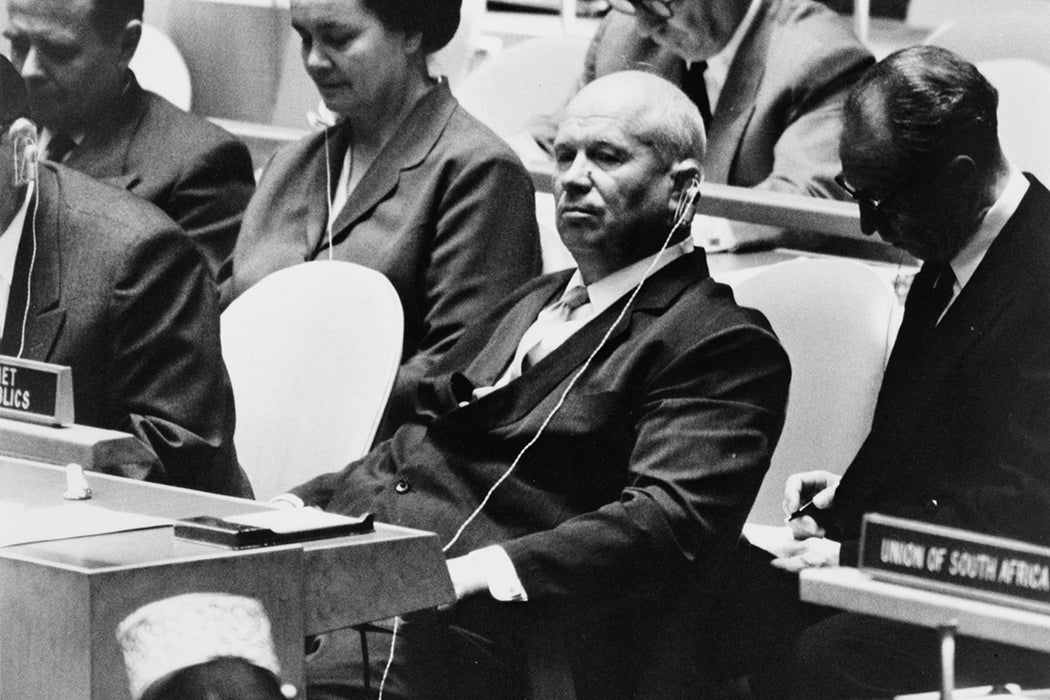On October 13, 1960, at a meeting of the United Nations General Assembly in New York, Soviet Premier Nikita Khrushchev took off his shoe and began banging it on his desk, shouting at Western-aligned delegates, “We will bury you!”
Or so the story goes. But the event itself is awash in anecdote and apocrypha. For the American public at the time, the incident personalized a formidable opponent on the world stage. The Cold War was beginning in earnest, and it was unsettling to see a man in charge of a nuclear arsenal banging his shoe in public. There are no photographs or recordings, however, of the alleged shoe-banging. Official accounts vary in their description, too. In references to the event it is described variously as “shoe-waving,” “shoe-pounding,” “banging,” “striking.” And the “We will bury you!” line was actually said years prior at a separate event, in reference to economic competition, not nuclear warfare.
So what exactly happened? A New York Times story from the next morning reports that Khrushchev indeed “pulled off his right shoe, stood up and brandished the shoe at the Philippine delegate… He then banged the shoe on his desk.” The leader was apparently reacting strongly to accusations of Soviet takeover in the Eastern Bloc.
In The Western Political Quarterly, a few years after the incident, the historian Ronald Rubin investigated how journalists covered the United Nations, and why incidents like one involving Khrushchev’s shoe captured the public’s attention. Rubin found that UN correspondents’ personal attendance was important in capturing such “color stories.” Without personally attending, reporters might miss out on the unofficial, unrecorded moments, perhaps reflecting the underlying attitudes of world leaders. They need access to, as Rubin says, the tics, the verbal and non-verbal cues, and the “expressions of sympathy, boredom, or excitement mirrored on the faces of respective delegates.”
Even if this specific moment in Cold War history is relatively unimportant today, it marked a change in the way we discuss politics. Our political discourse is now a steady stream of such “shoe moments.” When leaders like Vladimir Putin or Kim Jong-un are covered in the American press, it is often for their aggressive or bizarre behavior. These personal weirdnesses can give us insight into the affairs and general atmosphere of these countries. When we see Putin riding shirtless on a horse, we get a sense of the kind of image he wishes to project. On the flip side, world leaders can gain approval through winning personalities. Canada’s Prime Minister, Justin Trudeau, is almost certainly more well-known to Americans for his social-media-friendly antics than his policy positions.
Erratic behavior is unsettling, especially from people in power. But as with Khrushchev’s shoe, it behooves us to remember that unless we are in the room where it happens, we are always getting a mediated version of events.







